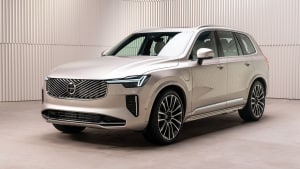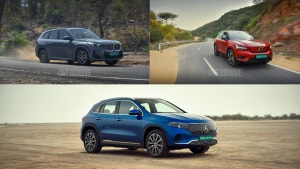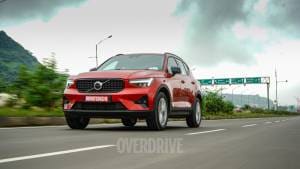2017 Volvo S60 Polestar first drive review
1996 saw the birth of the Swedish Touring Car Championship, a series designed to emulate the massive success and fan following of the British Touring Car Championship. In its first year, Swedish driver Jan Nilsson's team Flash Engineering entered as the official Volvo team fielding a front-wheel-drive 850 Super Touring built in accordance with BTCC regulations. Success was immediate. The team won the first two championships and still holds an STCC record of winning six consecutive races. In 2004, Nilsson sold his share of the company to Christian Dahl, who joined the company as chief mechanic in 2001. The team name was changed to Polestar, a simultaneous homage to Sweden's geographic location and a reference to being a star on the racetrack. Polestar continued for a few years as a racing team but with bigger and bigger involvement with Volvo. Then, in 2009, they were recognised as the official performance partner of Volvo.
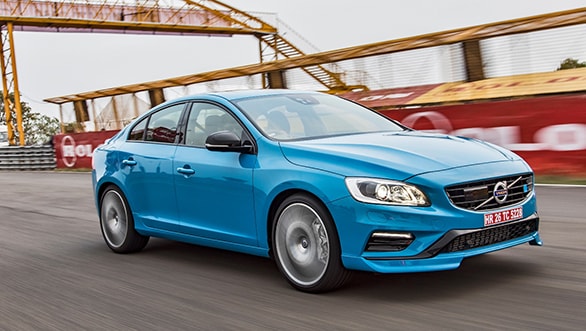
At this point, Volvo owners could purchase Polestar Performance Optimisation packages for road cars with turbocharged engines. In 2010, Polestar showed off its first road car effort, the C30 Polestar Concept. More road car packages appeared over the years as did some concepts, including the wild 500-plus horsepower S60 Polestar Concept from 2012. In 2015, Volvo bought out Polestar, making it the company's new performance brand, la AMG and M. Today, the S60 Polestar is the most powerful road car from the performance brand and it's now available in India. We got a short experience of the car at the Kari Motor Speedway and the initial impressions are highly positive.
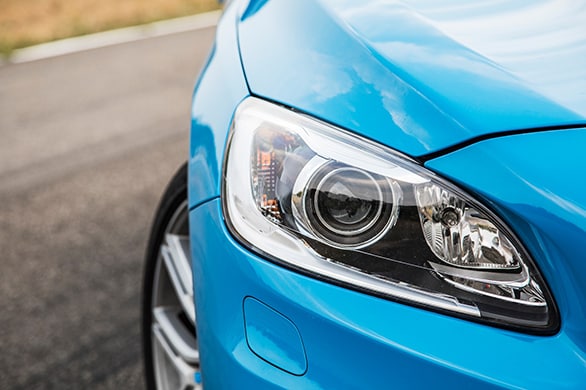
The Volvo S60 Polestar is essentially a heavily reworked version of the S60 T6 which is no longer on sale in India. Let's address the changes made in a step-by-step manner, starting with the way it looks. The S60 Polestar gets an aero-optimised body kit that comprises an aggressive-looking front bumper with subtle splitters designed to work with the 33kg of downforce generated by the gurney-flap like rear spoiler as well as the diffuser built into the rear bumper. Subtle skirting at the rear complements the large and stunning 20-inch wheels. Polestar offers 19-inch rims internationally but they only come wrapped in winter tyres. The sexy, but high-maintenance 20s are your only choice in India.
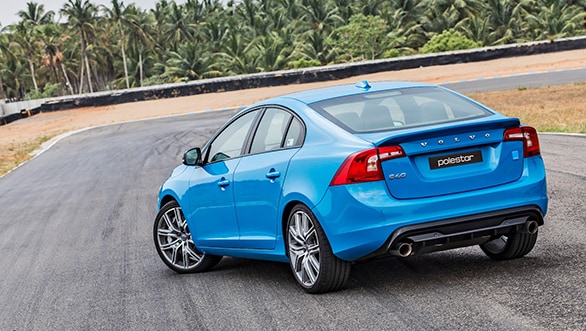
The interior is based on the current S60 and lacks the high-end feel from the current S90 and XC90 - that will arrive in the next-gen S60. That said, it feels sportier thanks to the snug, aggressively bolstered seats that hold the driver well without sacrificing comfort. There's generous use of Alcantara and lovely blue Polestar detail stitching to match the handsome rebel blue exterior. For those who find the blue a bit too extroverted, you can also have this car in onyx black or ice white.
Under the hood, the Polestar packs a worked-on version of the same 2.0-litre twin-charged 4-cylinder engine from the T6. The supercharger remains the same but the turbo is now bigger and the fuel pump is more powerful. There's also a new intake system, redesigned cams and stronger valves. Power jumps from 306PS to 367PS and torque climbs by 70Nm to 470Nm. While the T6 was front-wheel drive, the Polestar gets a BorgWarner all-wheel-drive system with a torque vectoring function. The 8-speed auto continues with the same ratios but gets new mapping to offer a sharper, crisper response in Sport mode. There's also an easy to engage launch control mode which activates when traction control is turned off. Polestar even engineered a little Easter egg Sport Plus mode that activates by slotting the shift lever in Manual/Sport mode and then pushing it upwards while simultaneously pulling on the right side paddle shifter a couple of times. This mode can only be engaged with the car at a standstill and keeps the engine upwards of 4,000rpm at all times.
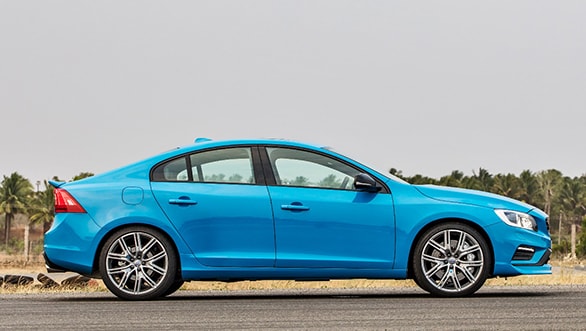
The chassis sees changes as well, mainly in the suspension and braking department. The springs are now 80 per cent stiffer, and working with them are a set of advanced Ohlins dampers. In a segment first, these dampers offer manual adjustment via a knob located at the base of each damper. There are 32 steps of adjustability that affects low-speed compression and rebound in a 70:30 ratio. The standard factory setting comes with each knob set at 10 clicks, and the owner's manual suggests multiple settings for different usages like Comfort, Ice and Track. The suspension mounts have been stiffened as well for a more connected feel. Another lovely detail is the thin carbon-fibre strut brace that you will spot under the hood.
You're probably thinking that this is some very expensive kit, but wait, there's more! The front brakes are high-spec, six-pot Brembos biting down on 371mm slotted discs. Rear brakes are the same twin-pot callipers from the standard T6 but armed with better pads. Just the cost of the suspension and brakes alone lies at around 9,000 euros.
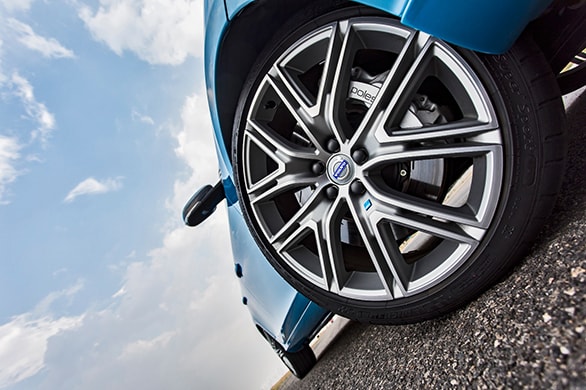
After a few laps around Kari, it is clear that this is a seriously quick car. With launch control engaged, Volvo quotes a 4.7s 0-100kmph time which is impressive for a 1,756kg machine. Top speed is rated at 250kmph and we were regularly seeing upwards of 180kmph on Kari's long straight. The interesting thing is how the performance is delivered, the supercharger offering a decent bottom end before the turbo takes over at about 4,000rpm. Power delivery is supremely linear with no significant spikes anywhere in the rev range. The engine revs up to 7,000rpm but the top end is a bit flat and it feels better to shift short of 6,500rpm. The 8-speed gearbox works well, but I found it a bit reluctant to downshift into heavy braking zones. Slotting the car into the secret Sport Plus mode makes the gearbox feel much crisper and it offers well-timed downshifts that assist hard braking. I suspect it would be a little too frenetic on the street, but this is the mode of choice for attacking the racetrack or a winding mountain road. Wrapping up the experience is a 3.0" stainless steel free-flowing exhaust system that produces a rorty soundtrack but stops short of being antisocial loud.
Ohlins makes some of the best-feeling suspension I have ever experienced on a motorcycle and the same applies here. I was pleasantly surprised to find that the Polestar is not a rock hard, teeth-rattling monster but instead presents a genuine suppleness that can be mistaken for a soft chassis. Kari was at its bumpiest state in a long time, but the Polestar suspension simply swallows the bumps with a single, well-controlled movement. You can feel the suspension working hard at keeping the car stable and allowing you to carry high corner speeds.
Aiding the suspension is the conservatively set-up all-wheel-drive system. It can send up to 50 per cent power to the rear wheels and has a very neutral feel. On the limit, it's more susceptible to push into understeer than snap sideways. This character makes the Polestar a very friendly to drive fast, but perhaps not the sharpest machine out there. Turn-in is sharp but if you ask for too much, the front wheels quickly start to protest. The fast way to drive this car is to focus on pointing the nose in the correct direction and then use the 367PS as quickly as possible via the leech-like AWD. A well-weighted steering wheel adds to the enjoyment and it offers a fair amount of feedback as well.
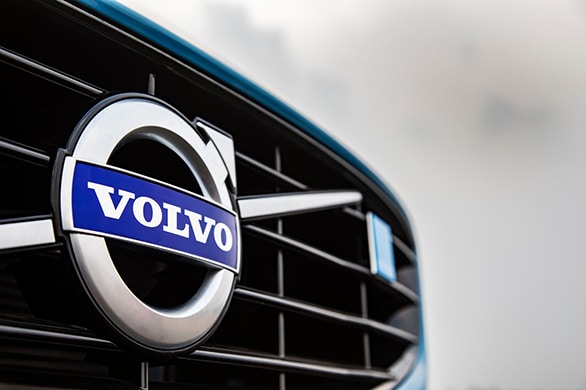
Tyres are specially developed 245/35-section Michelin Pilot Super Sports. Volvo didn't share a figure, but ground clearance looks generous enough to work on our roads. Given the firm but absorptive suspension, I think this will be a very nice road car as long as you give the super low-profile tyres the caution they demand on our roads. There's a space-saver tyre on the boot floor, but it is neatly closed off in its own felt-lined compartment. There's a lesson in aesthetic packaging for some German manufacturers who simply strap the wheel to the boot floor.
The S60 Polestar is an engaging, enjoyable car to drive even if it lacks some of the drama or violence of some rivals like the C 43 AMG. There's a serious amount of kit on offer thanks to those top-spec components, but this being a Volvo, safety is given a huge priority as well. Aside from the standard raft of airbags, parking assist and blind spot assist, the S60 Polestar offers radar- and camera-based features like Volvo's City Safety, adaptive cruise control, lane departure warning and collision warning with a full auto-brake function. Volvo claims this is the safest car in its segment with a 5-star Euro NCAP rating.
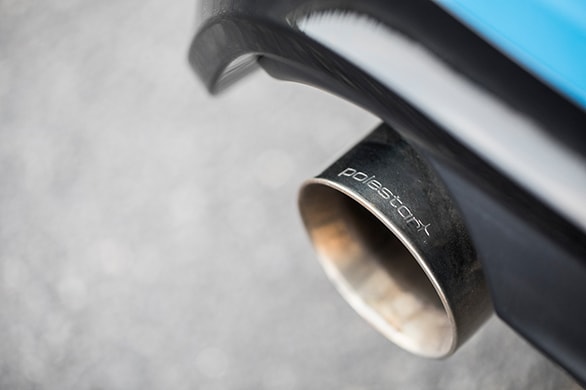
The S60 Polestar can give rivals like the C 43 AMG, CLA 45 AMG and Audi S5 Sportback a serious run for their money. And that's before you factor in the price, because at Rs 52.5 lakh ex-Delhi, the Polestar absolutely murders the competition in terms of sheer value. That makes it over 20 lakh more affordable than the C 43 AMG and puts it in the ballpark of cars like Jaguar's 240PS XF petrol. Sportscar value has never been this good and that includes the very well-priced Porsche 718 Boxster. The S60 Polestar will be retailed and serviced by Volvo's existing dealer network which currently comprises 17 outlets across the country. The company aims at having around 25 by year end with the goal of at least one dealer per state. Chennai will soon see the opening of India's first dedicated Polestar outlet as well.
Volvo has quickly become the master of offering great value. With its growing dealer network and highly desirable machines like the S90, XC90 and now the Polestar, we're hopeful the Swedish company will finally see the success it has always deserved.
Also read: Volvo S60 Polestar launched in India at Rs 52.5 lakh
-NA-
1969cc
Automatic
190
300
-NA-
Starts Rs 79.06 Lakhs
2994cc
Automatic
354
500
10.60 Kmpl
Starts Rs 31.72 Lakhs
1991cc
Automatic
135
450
-NA-
Starts Rs 86 Lakhs
1988cc
Automatic
300
380
-NA-
